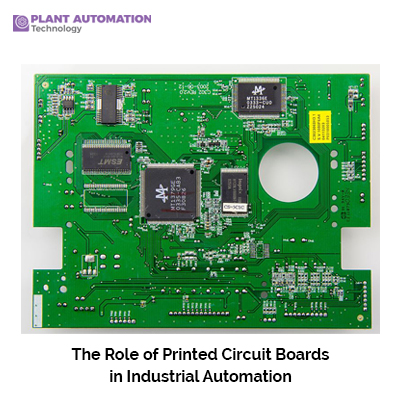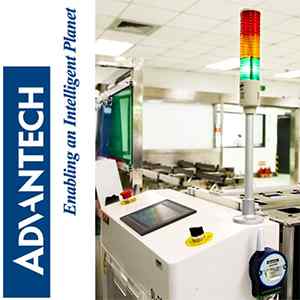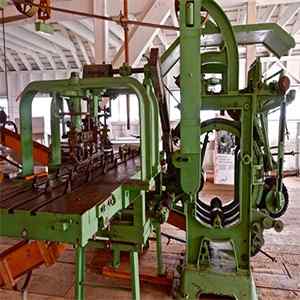The Role of Printed Circuit Boards in Industrial Automation

Importance of PCBs in Industrial Automation
In the world of industrial automation, printed circuit boards (PCBs) play a vital role in powering innovation and driving efficiency. These small, yet powerful, components are the unsung heroes behind the seamless operation of machinery and the seamless flow of data. From controlling robotic arms to coordinating complex manufacturing processes, PCBs form the backbone of automation systems.
PCBs are essential in industrial automation because they provide a platform for integrating various electronic components. With their intricate network of conductive pathways etched onto a non-conductive substrate, PCBs enable the seamless flow of electricity, making them ideal for powering and controlling automation systems. These circuit boards act as the central nervous system, connecting different parts of the machinery and facilitating communication between them.
Moreover, PCBs offer numerous advantages over other wiring methods. They are compact, lightweight, and highly customizable, allowing for efficient use of space within the automation system. PCBs also provide enhanced reliability and durability, ensuring that the machinery operates smoothly even under harsh industrial conditions. Additionally, PCBs can be designed to withstand extreme temperatures, vibrations, and electromagnetic interference, making them suitable for a wide range of industrial environments.
A) Different Types of PCBs Used in Industrial Automation
There are various types of PCBs used in industrial automation, each designed to meet specific requirements and perform different functions.
Single-Sided PCBs: Single-sided PCBs are the simplest and most common type of circuit board used in automation systems. These boards have components and traces on only one side, making them cost-effective and easy to produce. They are often used for less complex automation applications that don't require extensive circuitry.
Double-Sided PCBs: Double-sided PCBs have components and traces on both sides of the board, allowing for more complex circuitry. These boards are commonly used in automation systems that require a higher level of functionality and connectivity.
Multi-Layer PCBs: Multi-layer PCBs consist of multiple layers of conductive material separated by insulating layers, allowing for even more complex circuitry. These boards are used in automation systems that require a high level of integration and miniaturization. They offer enhanced performance, reduced signal interference, and higher component density.
Flexible PCBs: Flexible PCBs, also known as flex circuits, are designed to be flexible and bendable, making them ideal for automation systems with tight spaces or irregular shapes. These boards are commonly used in robotics, where they can be easily integrated into moving parts or curved surfaces.
B) Advantages of Using PCBs in Industrial Automation
The use of PCBs in industrial automation offers several advantages that contribute to enhanced productivity, safety, and cost-effectiveness.
Improved Reliability: PCBs are designed to be highly reliable and durable, ensuring the smooth operation of automation systems. The use of standardized manufacturing processes and high-quality materials minimizes the risk of component failure, reducing downtime and maintenance costs.
Space Optimization: PCBs allow for efficient use of space within automation systems. Their compact and lightweight nature enables the integration of complex circuitry into small form factors, maximizing the functionality of the machinery while minimizing its footprint.
Enhanced Signal Integrity: PCBs provide excellent signal integrity, ensuring accurate and reliable communication between different components of the automation system. The carefully designed conductive pathways and controlled impedance help minimize signal degradation, resulting in improved overall performance.
Ease of Troubleshooting and Repair: PCBs simplify the troubleshooting and repair process in industrial automation. The modular design of PCBs allows for easy identification and replacement of faulty components, reducing downtime and minimizing the impact on production.
Cost-Effectiveness: Despite their advanced capabilities, PCBs are cost-effective compared to other wiring methods. Mass production and standardized manufacturing processes make PCBs affordable, allowing for widespread adoption in various industrial applications.
C) PCB Design Considerations for Industrial Automation Applications
Designing PCBs for industrial automation applications requires careful consideration of various factors to ensure optimal performance and reliability.
System Requirements: Understanding the specific requirements of the automation system is crucial for designing PCBs. Factors such as power consumption, signal integrity, noise immunity, and temperature range should be taken into account during the design phase.
Component Selection: Selecting the right components is essential for the success of PCB design. Components should be chosen based on their compatibility with the automation system's requirements, durability, and availability. Special attention should be given to components that need to withstand harsh industrial environments.
Thermal Management: Thermal management is critical in industrial automation applications, as excessive heat can affect the performance and reliability of PCBs. Proper heat dissipation techniques, such as the use of heat sinks and thermal vias, should be incorporated into the PCB design to ensure optimal temperature control.
EMC/EMI Considerations: Industrial environments are often prone to electromagnetic interference (EMI). PCB designs should include measures to minimize EMI, such as proper grounding techniques, shielding, and the use of low-noise components.
Manufacturability: Designing PCBs that are easy to manufacture and assemble is essential for cost-effective production. Considering factors such as panelization, component placement, and manufacturing tolerances can help streamline the manufacturing process and reduce production costs.
D) PCB Assembly Process for Industrial Automation
The PCB assembly process in industrial automation involves several steps to ensure the proper integration of components and the reliable operation of the automation system.
Component Placement: The first step in the PCB assembly process is the placement of components on the board. Automated pick-and-place machines are often used to accurately position components based on the design specifications.
Soldering: After component placement, soldering is performed to establish electrical connections between the components and the PCB. Various soldering techniques, such as wave soldering or reflow soldering, are used depending on the complexity and requirements of the PCB design.
Quality Control: Once the soldering process is complete, quality control measures are taken to ensure the reliability and functionality of the assembled PCB. This may include visual inspection, automated testing, and functional testing to identify any defects or issues.
Final Assembly: After passing the quality control checks, the assembled PCB is integrated into the automation system according to the design specifications. This may involve connecting the PCB to other components, such as sensors, actuators, or controllers.
E) Testing and Quality Control of PCBs in Industrial Automation
Testing and quality control are critical aspects of ensuring the reliability and performance of PCBs in industrial automation.
Visual Inspection: Visual inspection is the first step in quality control, where the assembled PCB is visually examined for any visible defects, such as soldering defects, misaligned components, or damaged traces.
Automated Testing: Automated testing tools, such as automated optical inspection (AOI) machines, are used to perform comprehensive electrical tests on the PCB. These tests check for short circuits, open circuits, incorrect component values, and other electrical abnormalities.
Functional Testing: Functional testing involves testing the performance of the assembled PCB within the automation system. This ensures that the PCB functions as intended and meets the system requirements. Functional testing may include running simulated scenarios, monitoring output signals, and validating the overall performance.
Environmental Testing: PCBs used in industrial automation often need to withstand harsh environmental conditions. Environmental testing, such as temperature cycling, humidity testing, or vibration testing, is performed to ensure the reliability and durability of the PCB under real-world operating conditions.
F) Future Trends in PCB Technology for Industrial Automation
As technology continues to advance, the future of PCBs in industrial automation looks promising, with several trends shaping the industry.
Miniaturization: The demand for smaller and more compact automation systems is driving the need for miniaturized PCBs. Advancements in PCB manufacturing techniques, such as microvia technology and embedded components, enable the integration of more functionality into smaller form factors.
Increased Connectivity: With the rise of the Industrial Internet of Things (IIoT), PCBs in industrial automation are increasingly incorporating connectivity features. PCBs with built-in wireless communication capabilities, such as Bluetooth or Wi-Fi, enable seamless data exchange between different parts of the automation system, resulting in improved efficiency and real-time monitoring.
Advanced Materials: The use of advanced materials, such as flexible substrates or high-temperature materials, is expanding the capabilities of PCBs in industrial automation. These materials offer enhanced flexibility, durability, and resistance to extreme conditions, allowing for the development of more rugged and reliable automation systems.
Artificial Intelligence (AI): AI is revolutionizing industrial automation, and PCBs are playing a crucial role in enabling AI-powered systems. PCBs with embedded processors and AI algorithms can analyze real-time data, make intelligent decisions, and optimize the performance of the automation system.
G) Case Studies: Successful Implementation of PCBs in Industrial Automation
Numerous case studies highlight the successful implementation of PCBs in various industrial automation applications.
Automotive Assembly Lines: PCBs are extensively used in automotive assembly lines to control and monitor the production process. They enable precise control of robotic arms, coordinate complex assembly tasks, and ensure the seamless flow of data between different components of the assembly line.
Food Processing Plants: PCBs play a critical role in food processing plants, where automation systems are used to streamline production and ensure food safety. PCBs are used to control and monitor various processes, such as temperature control, ingredient mixing, and packaging, ensuring consistent and efficient production.
Pharmaceutical Manufacturing: In the pharmaceutical industry, PCBs are used in automation systems to ensure accurate dosing, precise temperature control, and reliable packaging. PCBs enable the integration of sensors and actuators, allowing for real-time monitoring and control of critical manufacturing processes.
Conclusion: The Future of PCBs in Industrial Automation
In conclusion, printed circuit boards (PCBs) are indispensable components in industrial automation. They provide the foundation for seamless operation, precise control, and efficient communication within automation systems. PCBs offer numerous advantages, including improved reliability, space optimization, enhanced signal integrity, ease of troubleshooting, and cost-effectiveness.
Designing and manufacturing PCBs for industrial automation requires careful consideration of various factors, such as system requirements, component selection, thermal management, and EMC/EMI considerations. The PCB assembly process involves component placement, soldering, quality control, and final assembly. Testing and quality control measures ensure the reliability and functionality of PCBs in industrial automation.
The future of PCBs in industrial automation looks promising, with trends such as miniaturization, increased connectivity, advanced materials, and AI shaping the industry. Successful case studies in automotive assembly lines, food processing plants, and pharmaceutical manufacturing highlight the crucial role of PCBs in enhancing productivity, safety, and cost-effectiveness.
As technology continues to advance, PCBs will remain at the forefront of industrial automation, driving innovation, and enabling the next generation of smart and efficient manufacturing processes.







